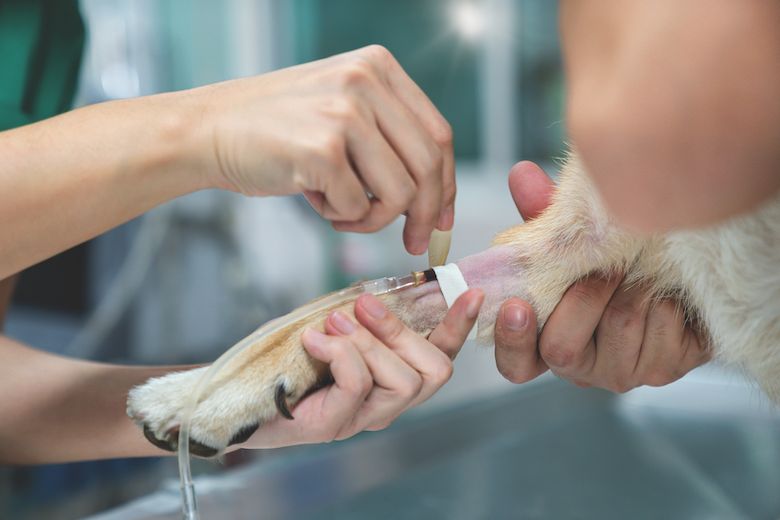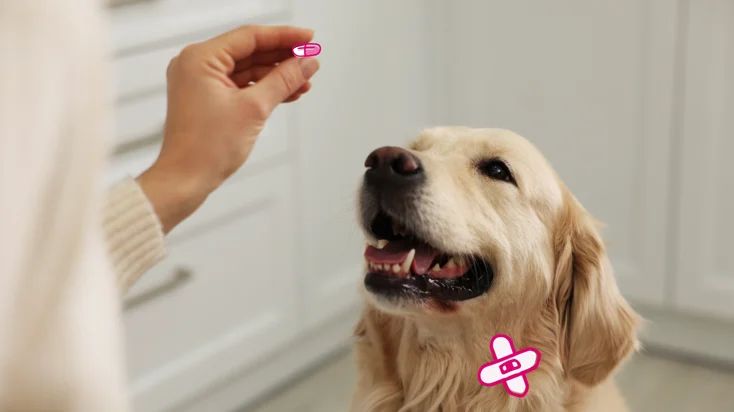Introduction
As dogs enter their senior years, many pet owners wonder if putting their aging companion under anesthesia is safe or worth the risk. With advances in veterinary medicine and anesthesia, procedures that once may have been too dangerous to attempt in older pets are now possible. However, anesthesia will always carry risks, especially for geriatric dogs.
This article explores the key considerations dog owners should weigh when deciding if their senior dog can safely undergo anesthesia. We’ll examine the risks, ways to reduce complications, alternative options, your dog’s quality of life, and questions to ask your vet. While every dog is different, this information can help owners make an informed decision that’s best for their faithful companion.
Evaluating Your Dog’s Health

Before putting your senior dog under anesthesia, it’s crucial to have a veterinarian perform a full physical exam and run bloodwork. This allows the vet to check for any underlying health conditions that could increase the risks of anesthesia or complications from the planned procedure.
A senior wellness check allows the veterinarian to listen to your dog’s heart and lungs, feel for lumps or bumps, assess your dog’s weight and muscle tone, look at their eyes and mouth, and evaluate their joints and mobility. Your vet will also check vitals like temperature, heart rate, respiration rate, and blood pressure.
Bloodwork helps identify issues like kidney disease, liver disease, diabetes, anemia, or thyroid problems. Your vet will likely recommend a basic profile that checks liver and kidney enzymes, protein levels, blood sugar, and electrolyte/mineral levels. They may also suggest running a complete blood count (CBC) to check blood cells and rule out infection.
Getting this medical workup done beforehand allows your vet to identify any concerning health issues and determine if your dog is stable enough for anesthesia. They can then take precautions to reduce risks, such as adjusting the anesthesia dosage or planning for extra monitoring.
Risks of Anesthesia in Senior Dogs
As dogs age, the risks associated with anesthesia increase. This is because older dogs are more likely to have pre-existing health conditions that can complicate anesthesia. Some of the main risks include:
- Cardiovascular complications – Older dogs are prone to heart disease and decreased cardiovascular function. Anesthesia can put additional strain on the heart and blood pressure regulation.
- Respiratory complications – Age-related lung disease and decreased respiratory function increase the risks of reduced oxygenation and breathing difficulties during anesthesia.
- Kidney issues – Older dogs have a declining glomerular filtration rate. Anesthesia drugs are filtered by the kidneys, so kidney dysfunction increases the risks of drug toxicity.
- Liver disease – The liver metabolizes anesthetic drugs. Age-related liver changes can lead to prolonged recovery times and drug effects.
- Thermoregulation – Older dogs don’t regulate body temperature as efficiently. Hypothermia is a risk under anesthesia.
Mortality rates with anesthesia in dogs over 13 years old can be 2-3 times higher compared to younger dogs. Rates of complications and adverse effects also increase with age. Careful screening, monitoring, and supportive care is crucial to managing these increased risks in senior dogs undergoing anesthesia.

Mitigating the Risks
There are several steps your veterinarian can take to mitigate the risks of anesthesia in older dogs:
-
Careful monitoring – Your vet will monitor your dog’s vital signs closely throughout the procedure. This includes heart rate, blood pressure, oxygen levels, breathing rate, and more.
-
IV fluids – Administering intravenous fluids helps maintain blood pressure and allows for rapid administration of medications if needed.
-
Short-acting anesthetics – Your vet may use short-acting anesthetic agents that are quicker to metabolize. This allows your dog to wake up faster after the procedure.
-
Adjusted dosing – The dose of anesthesia medications will be adjusted based on your dog’s health status and weight to minimize side effects.
-
Pain management – Controlling pain optimizes anesthesia safety and recovery time.
-
Intubation – Placing an endotracheal tube protects your dog’s airway and allows assisted breathing if needed.
-
Oxygen support – Your vet can administer supplemental oxygen during and after anesthesia as needed.
-
Emergency medications – Medications like epinephrine can be given immediately in case of an adverse reaction.
Discuss all options thoroughly with your veterinarian to create the safest anesthesia plan for your senior dog.
The Procedure Being Performed
Note that longer and more invasive procedures have higher risks than quick, minor ones. Anesthesia times over 2 hours raise the dangers. Complex surgeries like orthopedic procedures or major abdominal surgery can stress the body more than a relatively simple dental cleaning or lump removal.
When possible, see if alternatives are available for extensive operations in an older dog. For example, some lumps may be able to be treated with medication rather than surgery. However, procedures that are essential for a good quality of life, like fixing a painful broken bone, may be worth the calculated risk. Discuss the details of the proposed procedure thoroughly with your veterinarian.
Alternative Options
If the risks of anesthesia and surgery are deemed too high for your senior dog, there are some alternative options to consider that don’t require anesthesia:

Pain Medication
Your vet may suggest trying prescription pain medication first to see if it can effectively manage your dog’s pain or other symptoms non-surgically. There are many types of dog-safe pain relievers that can provide relief ranging from NSAIDs like Rimadyl to opioids like Tramadol.
Physical Therapy
Physical therapy performed by a professional can help strengthen muscles, increase flexibility, and reduce pain in dogs with arthritis or orthopedic problems. Things like massage, stretching, therapeutic exercises, hot/cold therapy, and electrical stimulation may be used.
Assistive Devices
Using ramps, harnesses, mobility carts/wheelchairs, or other assistive devices can help improve mobility and quality of life for senior dogs without surgery.
Dietary Changes
Your vet may recommend trying prescription senior dog food, joint supplements, or other dietary changes to help manage your dog’s health issues non-surgically.
Discussing these options with your veterinarian can help determine if any of them are viable alternatives to consider for your dog if anesthesia and surgery seem too risky.
Your Dog’s Quality of Life
When deciding whether to move forward with a procedure requiring anesthesia for an older dog, it’s important to carefully consider your dog’s current quality of life and whether the procedure will improve or extend it. As dogs age, their mobility, senses, and cognition can decline. Your dog may struggle with arthritis, incontinence, clouding cataracts, hearing loss, confused behavior, and other effects of aging.
While anesthesia does carry risks, especially for senior dogs, certain procedures can greatly improve a dog’s comfort and quality of life. For example, dental cleanings can alleviate pain from infected teeth and tumors can be removed to prevent further suffering. Cataract surgery may restore vision. Some orthopedic surgeries can provide pain relief and mobility for dogs struggling with arthritis.
Think about your dog’s daily experiences and any signs of declining health or discomfort. Determine whether the proposed procedure may slow deterioration or restore lost function. While the risks are real, the benefits of anesthesia may outweigh them if the procedure can return meaningful improvements to your dog’s wellbeing. However, if your dog already has a poor quality of life, putting them through anesthesia and surgery may not be advisable.
Discuss your dog’s current condition frankly with your veterinarian. Be honest about any changes you’ve observed as your dog has aged. Ask your vet to evaluate whether the procedure is likely to provide tangible enhancements to your dog’s quality of life and comfort. This is a very personal decision that depends on your dog’s individual circumstances.
Talk to Your Veterinarian
Having an open and honest discussion with your veterinarian is crucial when deciding if anesthesia is right for your senior dog. Your vet knows your dog’s health history and can provide insight into the potential risks and benefits of undergoing anesthesia at this stage of life.
Be sure to discuss the procedure being considered and ask if there are any alternatives that don’t require anesthesia. Provide your vet with a full account of your dog’s current health, including any conditions, medications, or recent changes you’ve noticed. Ask specific questions about how age may impact your dog’s ability to tolerate anesthesia.
Veterinarians can take precautions to minimize anesthesia risks in senior dogs, such as adjusting dosages, monitoring vitals, providing IV fluids, and intubating the airway. Discuss all of these risk mitigation tactics with your vet. They will offer advice based on your dog’s unique circumstances.
Most importantly, have an open conversation about your dog’s quality of life and what you hope to achieve from this procedure. Your vet can help you determine if the potential benefits outweigh the risks involved. With your vet’s guidance, you can make an informed decision that’s best for your beloved senior dog.
Making a Decision

Making the decision about whether to put your older dog under anesthesia can be difficult. The most important thing is to carefully weigh the pros and cons. Consider your dog’s overall health and quality of life, the risks involved with the specific procedure, and any advice your veterinarian provides.
Think about the reasons for doing the procedure and what impact it may have on improving your dog’s wellbeing. How urgent is the procedure? Is it absolutely necessary or just preferable? Also realistically consider your dog’s health problems and prognosis. Anesthesia always carries risks, especially for senior dogs, so how much risk is reasonable given their age and condition?
Discuss all of this thoroughly with your veterinarian. They can help assess your individual dog’s health status and whether they are a good candidate for anesthesia. Ask about any precautions or special measures they would take to reduce the risks. Understanding the vet’s viewpoint and recommendations is key to making an informed decision.
In the end, trust your instincts about what is best for your furry friend. If the procedure could significantly improve their quality of life and the vet feels the risks are manageable, it may be worth considering. But declining anesthesia can also be the right choice to avoid unnecessary stress on an aging dog.
Conclusion
When considering anesthesia for an older dog, it’s important to weigh the risks and benefits carefully. Anesthesia always carries inherent dangers, but those risks tend to increase as dogs age. Major factors to consider are your dog’s overall health, the procedure being done, whether alternatives are available, and your dog’s current quality of life.
While every dog is different, anesthesia can be riskier for senior dogs due to conditions like heart disease, kidney disease, cancer or cognitive issues. Make sure your veterinarian does a full exam and bloodwork to uncover any problems. Certain procedures like dental cleanings may be non-essential in a very old dog.
However, age alone shouldn’t disqualify a dog from needed treatment that requires anesthesia. With careful monitoring and precautions, many elder dogs undergo anesthesia without complications. Work closely with your vet to determine if it’s warranted based on your dog’s health, the procedure, and potential benefits.
Most importantly, consider your dog’s quality of life and whether the procedure will improve it. In some cases, anesthesia may significantly help an older dog’s comfort and wellbeing. In the end, make the decision thoughtfully, factoring in risks, benefits and veterinary advice.